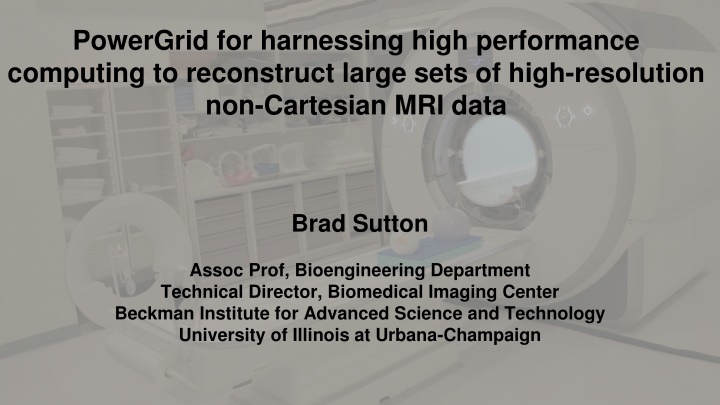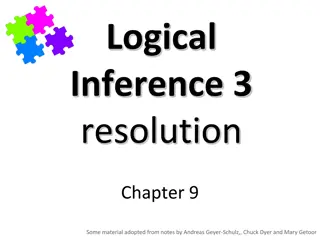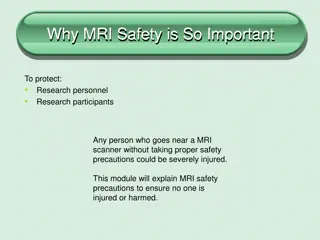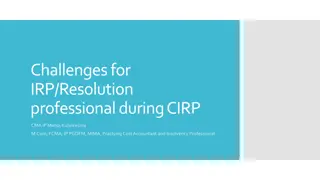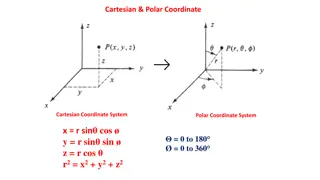PowerGrid: Reconstructing High-Resolution Non-Cartesian MRI Data for Bioengineering Research
PowerGrid is a cutting-edge system developed by Brad Sutton, Assoc. Prof. at the University of Illinois, for harnessing high-performance computing to reconstruct large sets of high-resolution non-Cartesian MRI data. This technology addresses the need for improved image reconstruction packages in MRI, particularly for fMRI and DTI acquisitions. By enabling enhanced delineation of fiber pathways and overcoming challenges related to image reconstruction, PowerGrid opens up new possibilities for advanced bioengineering research. Learn more about this innovative solution and its impact on MRI technology.
Download Presentation

Please find below an Image/Link to download the presentation.
The content on the website is provided AS IS for your information and personal use only. It may not be sold, licensed, or shared on other websites without obtaining consent from the author.If you encounter any issues during the download, it is possible that the publisher has removed the file from their server.
You are allowed to download the files provided on this website for personal or commercial use, subject to the condition that they are used lawfully. All files are the property of their respective owners.
The content on the website is provided AS IS for your information and personal use only. It may not be sold, licensed, or shared on other websites without obtaining consent from the author.
E N D
Presentation Transcript
PowerGrid for harnessing high performance computing to reconstruct large sets of high-resolution non-Cartesian MRI data Brad Sutton Assoc Prof, Bioengineering Department Technical Director, Biomedical Imaging Center Beckman Institute for Advanced Science and Technology University of Illinois at Urbana-Champaign
Need for Image Reconstruction Packages in MRI Most fMRI and DTI acquisitions for functional and structural connectivity are acquired by single-shot EPI (SS-EPI) This is limited and suboptimal as data goes to higher resolutions SS-EPI has echo time in the center of the readout- extra echo time and extra decay. Increased delay with increased spatial resolution. Not so with spiral Spatial resolution for single-shot data is limited by T2* blur and field inhomogeneity Modern acquisitions have fully 3D trajectories with undersampling in all three dimensions Unfortunately, raw data sizes large and recons are computationally expensive must save raw data to enable future recon tools
Enabling Improved delineation of fiber pathways 3D multi-shot, multi-slab navigated spiral DTI SNR efficient Correction for: Motion induced phase Magnetic field inhomogeneity Undersampled data Holtrop and Sutton, J Med Imaging, 2016.
Challenge: Image Reconstruction Large matrix size 1.25 mm isotropic data set Data Size: 18 GB for 6.5 min scan Physics: 3D non-Cartesian (Spiral) sampling Parallel Imaging with 32 channel coil Magnetic Field Inhomogeneity Correction Motion-induced Phase Correction Reconstruction Time 8 days for reconstruction running on workstation Graphics Processing Units (GPU) 100 s times faster: <1 hour. Enables imaging resolutions not feasible before. GTX TITAN GPU: ~$700 (6GB) CORES: 2688 Base Clock: 876 MHz IMPATIENT MRI: Illinois Massively Parallel Acceleration Toolkit for Image reconstruction with ENhanced Throughput in MRI PowerGrid ISMRM 2016.
http://mrfil.github.io/PowerGrid/ ISMRM 2016, p. 525
Flexible, Readable, and Modifiable %Forward Operator //Forward Operator Col<CxT1> operator*(const Col<CxT1>& d) const { Mat<CxT1> outData = zeros<Mat<CxT1>>(nx,ncoils); for (int ii = 0; ii<ncoils; ii++) outData.col(ii) = (*G_obj)*(SMap.col(ii)%d); return vectorise(outData); //G_obj*d is a forward NUFFT/DFT } outData = zeros(nx,ncoils); for ii = 1:ncoils outData(:,ii) = G*(SMap(:,ii).*d(:)); end %G*d is a forward NUFFT/DFT Structure of forward and adjoint transforms is maintained Code is easily portable from MATLAB to PowerGrid/C++ via Armadillo
PowerGrid: Enabling use of GPU/HPC Goal: Scalable across desktop to supercomputer Desktops, GPUs, Clusters, and even Supercomputers via OpenACC and MPI
Scale: Distributed Memory Computing How to use > 1 GPU? Message Passing Interface (MPI) Phase Corrected SENSE (pcSENSE) for Diffusion Imaging K20x: 2688 cores, 732 MHz clock rate. 6 GB.
Conclusion Need raw data reconstruction resources to accommodate next generation acquisitions Also need ways to store and share raw data Computationally intensive: need to bring resources to MRI physicists Enable order of magnitude improvements in spatial and temporal resolutions Thanks: MRFIL Lab: Alex Cerjanic, Joe Holtrop, Giang-Chau Ngo, Genevieve Labelle Jeff Fessler, B. Leback, G. Arnold, M. Van Moer PGI, NVIDIA, BlueWaters, Parallel Computing Institute NIH R01EB018107, Blue Waters Illinois Allocation National Science Foundation (awards OCI-0725070 and ACI-1238993)
